og The Resilience of the Commoners (fotos © Snaphanen)
In view of the importance justifiably attributed to the growing presence of Islam in Denmark – of which the 2005 Mohamed cartoon crisis is but one example – surprisingly little is known about the country’s Muslim population sociologically, although considerably more information has been produced in the wake of the crisis.
Characteristically, newspapers, private researchers and research institutions and private newsletters have produced the knowledge we do have. The official Statistics Denmark offers little reliable information on Muslims as a group. The politically correct rationale appears to be the claim that Muslims are no different from anybody else and that it would be discriminatory to treat a second-generation Somali any differently from a Dane whose ancestors have lived in the country since the time of the Vikings.
Of course, it has been hard to conceal the fact that “immigrants” or “new Danes” are vastly overrepresented among in the prison population, or that a disturbing number of convicted rapists and other men of violence bear Muslim names. Or that Muslims appear to receive vastly more than their fair share of social expenditures. In early 2006, a government-appointed Welfare Commission manned by our best university experts concluded that Denmark’s immigration policies cost somewhere between 30 and 50 billion Danish kroner a year – an enormous sum for a country of 5.4 million people.
The government is currently considering ways to increase immigrants’ participation in the job market. And no doubt the situation is serious. It is estimated that the number of “new Danes” will triple over the next fifteen years, and, if their socioeconomic behaviour is not brought into line with that of the “old Danes”, the welfare state is likely to crumble under the pressure of having to finance a vast third-world population it was never intended to support.

But again, the extent to which these socioeconomic anomalies can be described as Muslim problems is a matter of conjecture. We are basically left to rely on anecdotal evidence. However, it is striking that one never hears of any disproportionate burdens on state coffers caused by the presence of a great number of Buddhist Sri Lankans or Vietnamese, Hindus, Sikhs or Chinese. Nor do we hear stories of second- or third-generation immigrants from these groups filling our prisons.
Even the number of Danish Muslims is unknown. Statistics Denmark does not keep track of religious affiliation, and estimates vary wildly – anywhere from 200,000 to 500,000 or more. In May 2006 the now famous daily newspaper Jyllands-Posten estimated the number of Muslims in Denmark to be 207,000 although it didn’t specify the method whereby it came to that figure. However, I am inclined to believe that the number – slightly over 4 percent of the population – is correct. It corresponds well with the figure I reached in August 2004 based on a count of male first names. I came to 191,000 as of January 2004 – a figure that had risen 25 percent since 1998.
My method would also include Danish converts to Islam, as it appears customary for converts to change their first names to something Muslim. One example being the imam Abdul Wahid Pedersen and the well-known agitator for the extremist islamist organization Hizb ut-Tahrir, Musa Kronholt.
Incidentally, the number of Danish converts is insignificant. It was long believed to be around 5,000, but in Spring 2006 the Copenhagen daily Berlingske Tidende reported that the true figure is probably closer to 2,500. So we are by no means seeing a mass conversion to the creed of Mohamed.
The problem of inadequate knowledge is compounded by the unwillingness of most politicians, academics, journalists and opinion leaders to use precise language. It is considered politically incorrect to talk about Muslims as a distinct group, which means that in Denmark we use all sorts of nebulous expressions such as “immigrants”, “new Danes” and “bilinguals”. In that way one lumps together all immigrants, asylum seekers and their descendants from non-Western countries, though very little can be said of them as a group.
This attitude has very serious consequences. Not only are decision-makers and voters prevented from getting a grip on the problems and what can be done to solve them. Equally detrimental to our societal wellbeing, our euphemisms are producing a sort of double discourse – even in Denmark, which is probably the country in the Western world with the highest degree of free speech.
When the academic elite, the press and politicians talk about second- and third-generation youngsters, everybody knows that they are not talking about people from Chile, Russia or Tibet. When we hear of the increasing problems of “bilingual” pupils in city schools, it is well understood that this does not refer to kids whose parents speak Chinese, English or Swedish at home.
We are living with problems very clearly associated with the Muslim zuwanderung (to use Bassam Tibi’s excellent expression), but whose precise relationship with Islam as a belief system and worldview cannot even be discussed. Merely to ask whether there is such a relationship is considered disqualifying and is usually met with the assertion that Islam is a religion of peace, love, tolerance and understanding – and therefore, by definition, cannot give rise to antisocial behaviour.
This is all very strange. When during the 1990s Serb fighters engaged in mass rapes of Bosnian Muslim women, it was quite acceptable – and of course true – to say that the reason was religious or ethnic hatred. When Christian girls in Western Europe are raped by Muslim men –(the rape of Muslim women by non-Muslims is unheard of – at least I have never heard of such an incident in Denmark), it is explained by poverty and social exclusion.
The politically correct attitude in Denmark – and I believe that the picture is not much different in other European countries – is that “religion” is a strictly private matter that cannot have any impact on people’s behaviour as citizens and members of society. This has been detrimental to our integration efforts. It has blurred the fact that non-Western immigrants and their descendants are at least as internally different as are “old” Danes, Swedes and other European populations.
In consequence, no nationally recognized spokesmen for the Sri Lankan, Vietnamese, Chinese, Buddhist, Hindu, third-world Christian or other recently arrived communities have emerged. This may be partly because, in many cases, their integration into Danish society has been unproblematic. (Interestingly, this is a powerful argument against the widespread tendency to accuse the Danes of being an especially vile, xenophobic and racist people.)
As a result, Denmark’s “ethnic minorities” became synonymous with the country’s most vociferous Muslim groups, especially with their self-appointed champions. Until early 2006, we therefore found ourselves in a situation where a few imams – most of whom had amply demonstrated their fundamentalist leanings – and radical ethno-politicians and leaders of Islamic organizations were recognized as the legitimate spokesmen for all Muslims in Denmark (and in practice as the only ethnic representatives ever consulted). Undoubtedly, a great number of Danish Muslims – the so-called “cultural Muslims” or Muslims of liberal persuasion – do not feel represented by the media imams, but little was known of their number, attitudes or aspirations.
Until recently, only outcasts from polite society dared question the claim that the vast majority of Danish Muslims had exactly the same attitude towards their religion as most old Danes have towards Lutheran Christianity, which is still the predominant religion in the country, claiming over 80 percent of the population as members. In sum, the vast majority of Muslims were believed to take religion lightly.
Opinion polls conducted after the explosion of the Mohamed crisis following the daily Jyllands-Posten’s 30 September 2005 publication of twelve cartoons of the prophet make this basic assumption highly dubious. Among notable poll findings is that few Danish Muslims appear willing to throw their weight behind the newly-created “Democratic Muslims” group set up by the Radical Liberal and very popular MP Naser Khader at the beginning of 2006. His wide support among non-Muslim Danes does not appear to be matched by support from his organization’s natural constituency.
On 6 June 2006, Berlingske Tidende created a stir by publishing a poll showing that Naser Khader’s “Democratic Muslims” could count on the support of 14 percent of Danish Muslims and could only boast a paid-up Muslim membership of 1,137 (in addition to 16,000 non-Muslim supporting members). Since then there has been a debate as to whether 14 per cent is a lot or very little. Naser Khader himself pointed to the fact that one of the Salafist ring leaders of the imam conspirators who went to the Middle East in order to stir up anti-Danish trouble and were therefore instrumental in creating the post-cartoon crisis, Ahmed Abu Laban, could only count on support from 3 percent of Danish Muslims. Despite this, Abu Laban was acknowledged as the leader of the Danish Islamic Faith Community, claiming to speak on behalf of tens of thousands of families.
More indicative of Islam’s influence was an opinion poll published in late March 2006 by the trade union publication A4; the finding showed that, though only 25 percent of adult Muslims said that religion played a significant role in their daily lives, the corresponding figure for young Muslims was 75 percent.
The crucial question here is, of course, what Muslims understand by religion. And this begs an even more profound and difficult question: What is Islam? Is Islam a religious faith in the traditional European sense, ie a personal relationship between the individual and God, or is Islam more akin to an all-encompassing ideology that regulates all aspects of human life including politics, the judicial system, philosophy, relations between the sexes, attire, modes of behaviour etc? –To put it more simply, is Islam the same as sharia or can there be a liberal, personalized, moderate Islam that does not lay claim to controlling every aspect of human existence?
Very little is known about Danish Muslims’ interpretation of their religion, but surveys conducted in Germany and more recently in Great Britain and the US seem to indicate that vast sections of the Muslim populations equate Islam with sharia, which may fairly be characterized as a totalitarian ideology of the same stripe as fascism and communism. It stands to reason that a sizable segment of Danish Muslims share the sentiments of their German, British and American coreligionists.
It is also important to point out that, regardless of the actual support Danish imams have among Danish Muslims, we have yet to hear from a single moderate imam. Without exception, every imam who has been questioned on the subject has stated that, of course, the full sharia must be implemented at some unspecified date in the future – including punishments such as the stoning of women and the killing of apostates. As is the case in most other places, the sharia is not a set of laws that may be voted in by parliament after Muslims form a majority. Sharia should be immediately implemented; in fact, it is being implemented to the extent that the authorities do not prevent it. For that reason Naser Khader, one of Denmark’s most popular politicians, has been living under police protection for several years because he has been declared an apostate and should therefore be killed. Among Mr Khader’s offenses against Islam is that he has given his daughter a Christian name.
As Bernard Lewis recently explained to Die Welt, the fact that Muslim religious authorities are claiming the right to punish Danish cartoonists for crimes that are not crimes under Danish law, means that they now consider Denmark to be part of the Dar al-Islam and its population to be dhimmi (ie members of monotheistic minorities tolerated in exchange for subservience to the umma, the Muslim nation) who should be subject to the sharia.
One further point regarding so-called moderate Islam: I have not heard of any credible example of a moderate Islam in Europe that has gained any appreciable following or spiritual influence. If you scratch the surface of so-called moderate religious leaders – and this is certainly the case in Denmark – the difference between moderates and extremists is that the former seek to advance their goals by peaceful means, while the latter will gladly resort to violence. But in both cases the goal is the same: to implement the sharia and to subjugate indigenous non-Muslims to a state of “dhimmitude”.
Two aspects in particular stand out from among recent developments in Danish-Muslim relations.
First, it is increasingly clear that a great many Muslims have never had the desire to integrate into Danish society, but instead have insisted on maintaining their imported culture and, to a certain extent, to transplant the institutions of that culture into Danish soil. It was naive for Danes to have believed otherwise.
The outcome of this “multicultural” – in fact bicultural – society has been a growing separation between old Danes and Muslim arrivals and their descendants – an actual separation becoming more pronounced as time goes by. Yet the ideology of integration, under whose auspices this massive Muslim immigration occurred, would have predicted the opposite.
In spite of the many billions of kroner which the Danish government has spent on “integration” over the past thirty years, our cities and schools – both public and private – are becoming more disintegrated.
Nor is there any indication that those wielding power within the Muslim community are willing to accept conversions from Islam or to grant Muslim women the right to marry non-Muslim men.
There is growing talk of “parallel societies” in Denmark, ie a situation where the country ceases to function as a unitary polity due to the physical, cultural, religious and politico-judicial separation of non-Muslims and Muslims into incompatible, antagonistic enclaves. Such a two-society development would be akin to recent experience in the Balkans and to Northern Ireland during the Troubles.
The other aspect, closely connected to the Muslim disinterest in integration with Danish society, is the realization that vast segments of the Muslim population may not consider themselves as a minority at all, but rather as part of the 1.3 billion strong world umma. Recent anti-Danish animosity over the Mohammed cartoons throughout the Muslim world has probably strengthened many Danish Muslims’ sense that they are part of the worldwide umma, not part of a minority in Denmark.
So increasingly, it appears, the real future minority in Denmark will be the Danes.
One may well ask if the same is not the case throughout Europe and other parts of the Western world. In particular after the 1979 Iranian revolution, a number of powerful, well-heeled international Muslim organizations (especially the Saudi Wahhabi) have spent billions of dollars (I recently heard a figure of USD $65 billion over the past twenty-five years) in order to ensure their ideological sway over the Muslim diaspora in Europe and elsewhere, and to prevent its integration into the Western mainstream – with amazing success, it should be added.
There appears to be a growing realization among demographers that, despite the anti-immigration policies of the current Danish government, third-world immigrants and their descendants (with or without citizenship) will constitute the majority of the Danish population before the end of this century. A sizeable segment of this third-world population will be Muslim, and well before the middle of the 21st century, the number of Muslims will be large enough to have irreversibly changed the composition and character of the country. It has proved impossible to integrate this growing Muslim population into Danish culture, and there is no reason to expect any change as the number of Muslims grows.
This does not mean, of course, that integration could not happen. History is full of surprises. All I am saying is that I know of no example of a sizeable Muslim population successfully and permanently integrating into a non-Muslim host population while adhering to its Muslim beliefs. The burden of proof rests with those who have claimed that the integration of tens of millions of Muslims in Europe would never be a problem, but who have nothing today to show for their claim.
Will Muslim non-integration spell the end of the secular state as we have known it? Most probably. Religion – or, more accurately, Islamic ideology, which knows no distinction between religion and politics – is on the ascendant as the constitutive principle among Danish Muslims. And as Muslim institutions grow stronger, the Islamic deen (ie the all-encompassing Islamic ideology which also includes religion as it is usually defined in the West) is bound to become even more powerful as the organizing principle of the Muslim parallel society.
How will the “old” Danish and nominally Christian population react to this metamorphosis? That will largely depend on what organizing principle will determine the character of the Danish parallel society. Two possibilities stand out: “Danishness” and “Christianity”. The former option would probably entail a society founded on a nationalistic or ethnic myth; the latter model might be more ethnically inclusive and stress society’s Christian roots.
In either case it is difficult to see how the secular state could survive, because parallel societies within the confines of one nominal geographic entity will not be free to define themselves or to determine their own political systems or modes of governance. They will constantly be forced to maneuver in response to “the other’s” long-term objectives and immediate actions – as has been the case in the recent examples of parallel societies such as Bosnia, Kosovo, Lebanon, Northern Ireland and the Basque provinces.
Nothing indicates that Denmark is any worse off regarding the harmonious integration of its Muslim population than other European countries, so we shall probably see the same pattern repeated throughout the continent within no more than twenty to thirty years (the 2005 uprising in the French suburbs is likely a harbinger of worse to come).
Under these conditions the modern system of sovereign territorial states could well break down, although it is impossible to predict what might replace it. It seems highly unlikely that a European Union can fill the void if it remains based on state structures that are no longer able to exert sovereignty over their own territory. The territorial states might not even be replaced by anything resembling a permanent structure or order.
Without order and democratically accountable governments able to deliver justice and good governance, it is also difficult to foresee how the ideals of the Enlightenment can be preserved.
The Resilience of the Commoners
Country Report, Denmark
Brussels 18.10.2007
By Lars Hedegaard
There is not sufficient time here to go into the situation in Denmark in great detail. For more comprehensive reports and analyses of recent events in my country I append two separate papers.
My talk consists of two parts. After a brief report on important developments in Denmark, I intend to address issues of a more general and strategic importance.
It is by now quite clear that the Danish cartoon crisis that erupted a few months after Jyllands-Posten’s publication of the Muhammed drawings on 30 September 2005 was deliberately triggered to test if Denmark was ripe for a take-over in the sense that the Danes were willing to bow to sharia law and accept their place as dhimmies.
Bernard Lewis went even further and observed that the death sentences against the Danish cartoonists and editors were a sign that the Islamic strategists were already considering Denmark to be part of the Dar al-Islam where the sharia applies.
As subsequent research has revealed, it is equally evident that the main instigator of the troubles in the shape of embassy and flag burnings, violent demonstrations, death threats and boycotts were muslim states in cahoots with The Muslim Brotherhood.
I shall refrain from speculating as to why the leaders of the umma thought of Denmark as a soft spot ready to be conquered. Perhaps they had been looking for a suitable place to show off their global reach and decided that it might as well be Denmark since it presented itself as a target at the right time.
Recently the entire charade has been repeated following the Swedish artist Lars Vilks’ publication of a drawing of a prophet (he didn’t say it was Muhammed) as a dog in a traffic circle. The same death threats were issued although the street demonstrations were not as well organised or violent as in the case of Denmark.
Interestingly the Swedish experience sheds new light on the Danish case. Danish Prime Minister Anders Fogh Rasmussen was roundly blamed and vilified for his refusal to meet with the ambassadors from muslim states who would like to lecture him on the proper “tone” in the press and demanded an official apology. Rasmussen’s unwillingness to see the muslim emissaries was then cited by Danish apologists for the imams as the true cause of the subsequent troubles. Had the Prime Minister only agreed to listen to the well-founded grievances of the concerned ambassadors, matters would never have got out of hand.
Well, the Swedish prime minister did receive a deputation of muslim ambassadors to discuss internal Swedish affairs and he got precisely the same result as his Danish colleague – death threats.
The refusal of the Danish Prime Minister to issue a formal apology for activities that were perfectly legal under Danish law to countries that do not allow freedom of expression may be seen as proof that Denmark did not surrender. But the picture is mixed.
If we look at most members of the Danish elites – among writers, journalists, academics, the Lutheran Church and several political parties – particularly on the left – they were only too eager to apologise and publicly condemn Jyllands-Posten for using free speech for purposes for which it had never been intended, i.e. to cause dismay among muslims. While paying lip service to the principle of free speech, these elites were perfectly willing to accept guidelines for its appropriate use issued by the self-proclaimed spokesmen for “1.6 billion muslims”.
Most disturbing of all was the fact that leaders of the Danish security police, known as the PET, reacted to the well-orchestrated onslaught against Danish interests at home and abroad by lauding the calming and benevolent influence of the Danish imams and declaring its intentions to collaborate more closely with them in future. The very people who had been instrumental in stirring up trouble by travelling around in the Middle East showing pictures that had not been printed in any Danish newspaper – including a photo that they claimed to be showing Muhammed as a pig, but was in reality a photo of a man participating in a pig-squealing contest in France.
The most important outcome of the Muhammed affair – undoubtedly Denmark’s most serious foreign policy crisis since 1945 – was that by and large the common man stood firm in his defence of free speech. Several subsequent opinion polls have confirmed that despite some erosion of support for Jyllands-Posten and the right to offend and ridicule religion, there is still a majority of unbowed Danes behind our old freedoms. We are thus faced with a truly remarkable state of affairs, where those who make a living out of writing are more than willing to stay within guidelines dictated by representatives of powers where teenage homosexuals are whipped and hanged in public, whereas the common folks defend the very freedom of speech for which the professionals have little use.
The resilience of the commoners makes Denmark stand out among so many of our neighbours as a country to watch.
It is also this popular support of freedom that encourages our government to take action where other countries would rather look the other way. As in the case of Ayaan Hirsi Ali who was recently denied protection by Holland during her refuge in the U.S. This led the Deputy Mayor of Odense, Alex Ahrendtsen from the supposedly extreme right party, The Danish People’s Party, to invite the black Somalian woman to seek asylum in his town. When this initiative was decried as “disgusting” by a representative of the left socialist and third-worldist Unity List, and after Danish PEN had declared that Ms Ali was in no need of protection and was not even an author, the Danish Minister of Culture, Brian Mikkelsen (Conservative) extended an official invitation to her on behalf of the government and declared that it would assume all necessary expenses for her protection. To make the government’s stance absolutely clear, Prime Minister Rasmussen subsequently chastised the Dutch government for having abandoned the troublesome Ms Ali.
Denmark also became the place that gave Lars Vilks the solidarity meeting nobody offered him in Sweden. On 2 October an overflow crowd in Copenhagen invited by The Free Press Society demonstrated their respect for the brave artist. Among the participants were luminaries such as cultural editor Flemming Rose and the cartoonist Kurt Westergaard of Muhammed fame, the “cultural muslim” politician Naser Khader and the recently appointed minister of social Affairs Karen Jespersen (Liberal).
The initiative was widely reported by the national press and was generally well received.
For the second part of my presentation, I should like to address another issue of general relevance, which is identifying our most pressing tasks in the immediate future.
Undoubtedly we ought to continue our gathering of information on the concrete actions taken by our opponents around the world. But I doubt that we shall get much wiser by simple fact-finding. We know more or less what the operatives of the umma are up to and how they usually go about their day-to-day business of undermining Western society.
We now need to proceed from fact collection and the dissemination of thoughts to active resistance. For we have long been faced with a determined offensive aimed at our defeat and eventual subjugation as dhimmies within an extended Dar al-Islam.
In order that we may begin to defend ourselves against this jihad – something we have up till now failed to do – we need continually up-dated analyses of the islamic strategy and tactics. They have to be analysed dispassionately as objective military problems exactly as any general staff would attempt to analyse the manoeuvres of the enemy on the battlefield. For we can be sure that we are being carefully observed by our attackers who have a good and often very precise idea of what weapons to use against us at any particular moment.
Jihad is not necessarily tantamount to violent warfare or terrorist attacks. Jihad employs a wide array of offensive instruments including psychological, economic, demographic, political, cultural, intellectual, social, criminal and violent ones. Unless we begin to analyse the world and the relationship of forces as our attacker would do, we are bound to miss the picture. In fact most of our leaders do not even acknowledge that we are under attack – indeed an ideal situation for any conquering army and one that has not even been anticipated by Western war theoreticians.
Our leaders keep looking for terrorists in a haystack – as indeed they should – but that is pretty much all they do thus allowing the enemy to conduct his main operations without them even being noticed. The English theoretician of military strategy B.H. Liddell Hart talked about “the indirect approach”. The umma is the true master of this discipline and has been for 1400 years.
Terror, violent insurrection and mass slaughter will undoubtedly play a decisive role in our final subjugation but they will only be employed on a grand scale if and when our will and ability to resist have been undermined by other – “peaceful” – means.
Here and now we may identify three tasks:
1. We must define who is the “we” which the umma is trying to subjugate and which must therefore defend itself. This we must know to be able to identify our potential allies.
Clearly we cannot be defined as “white”, “Europeans”, “Westerners”, “Christian”, “people of Greco-Roman or Judeo-Christian background” or the like. People fitting these descriptions are certainly prominent in our ranks, but then we have many other friends who do not match these labels.
The common characteristic of all those who have refused to accept the yoke of islam is precisely that they are determined to preserve our freedom or regain it if it has been lost. Little more can be said of them as a collective.
So what is going to be the umbrella under which the resistance fighters may gather? It cannot and should not be “whiteness”, “Europeanness”, ethnicity or even Christianity – although determined Christians will undoubtedly play a crucial role in our counteroffensive.
Our most likely banner will be a revived sense of nationality, which is a much more inclusive concept than any of the above. So we will defend ourselves as an alliance of like-minded nations as has been the case many times before
2. In the likely event that parts of Europe – and probably parts of other Western countries such as the U.S., Canada and Australia – will be lost to parallel societies outside of our political and judicial control – at least temporarily – we need to define achievable objectives for our defensive strategy.
It is clearly not enough for the voters in the democratic countries to elect new governments even if they promise to stem the inundation by umma-members or to resist the islamisation of our countries. Many of our institutions have already been undermined to a degree where they have effectively been turned into bastions of our enemies, and there is little any government, however well-intentioned it may be, can do to counteract this pernicious influence in the absence of independent and determined popular resistance.
Again it is the common man and the self-organising ability of the civil society that will count in the long run.
Dhimmification has hit many of our universities and in some places even our public schools, the courts, public administration, vast sections of the news media, international organisations such as the UN and the EU, a number of prominent transnational NGOs, labour unions, women’s movements, cultural institutions and, increasingly, large banks and corporations that have been penetrated by umma capital.
In this situation – which is bound to get much worse – what might be our objectives in the short, medium and long term?
Perhaps we must realise that it is no longer possible to preserve freedom throughout all of our national territories but that we shall be forced to relinquish control over parts of them.
3. We need to develop a strategy that may allow us to achieve our objectives. This means that we must develop a comprehensive and deep strategy equal to that of islam. This strategy must take into account that some of our public and private institutions may opt to side with our enemies unless we force them to side with us.
A successful defensive strategy may necessitate the creation of parallel institutions under our control accompanied by civil disobedience vis-‡-vis the official, dhimmified ones – which it a classical occurrence in occupied countries.
We would undoubtedly benefit from a study of the modus operandi of primarily European resistance movements during World War 2 though our present situation is much more ominous at least long term.





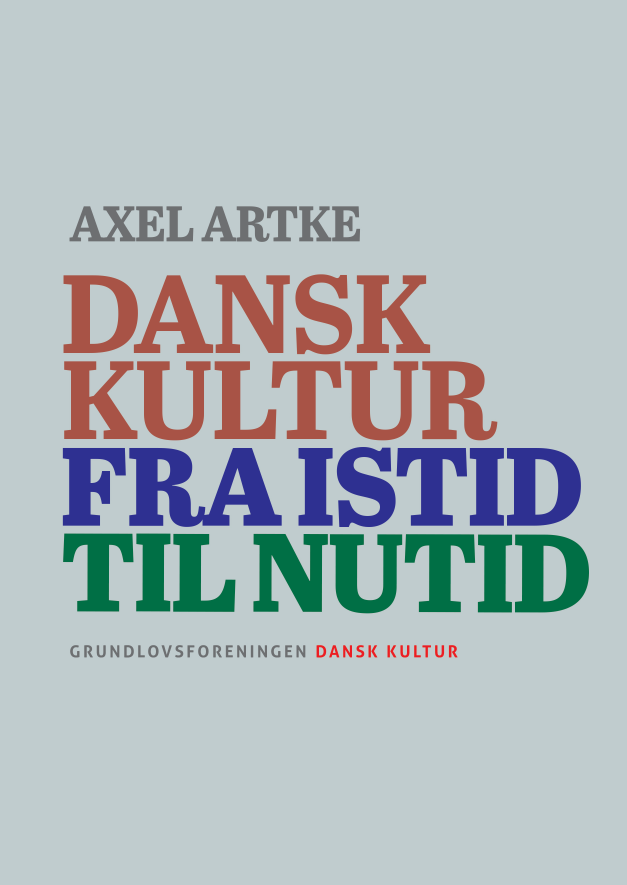

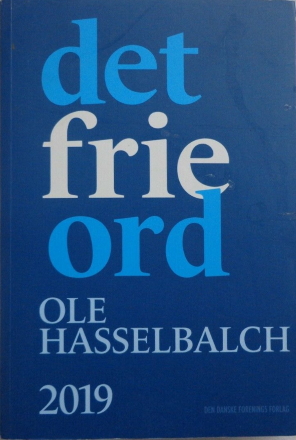
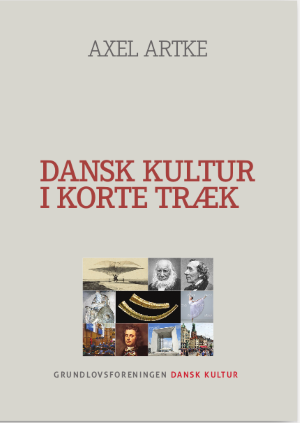
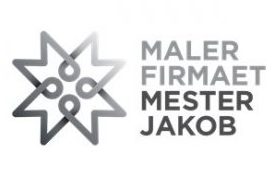
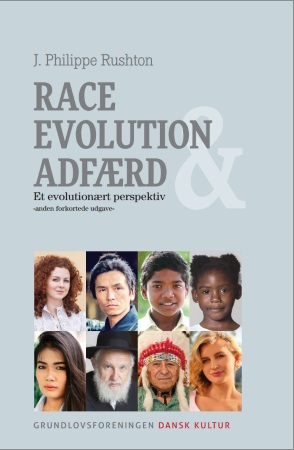
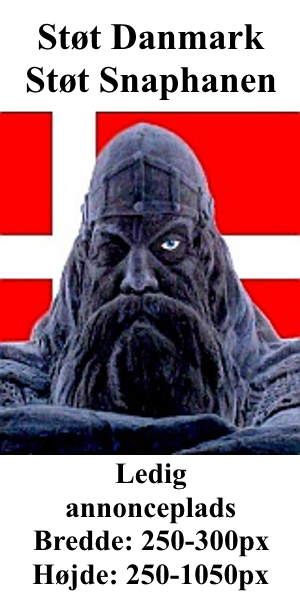
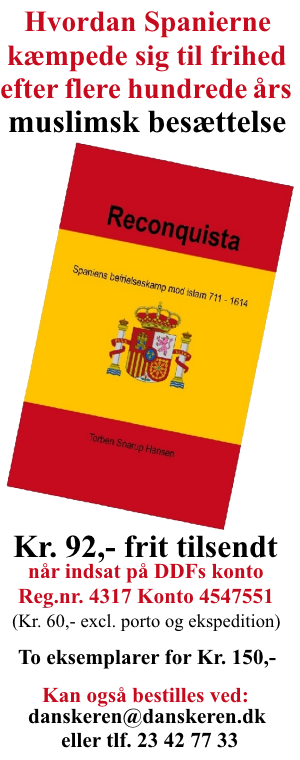
[…] en counter-jihad-konference i Bruxelles i 2007 sagde Lars Hedegaard også, som tidligere citeret: We need to develop a strategy that may allow us […]
[…] http://snaphanen.dk/2007/10/23/lars-hedegaard-the-growth-of-islam-in-denmark-and-the-future-of-secul… I read this […]
[…] http://snaphanen.dk/2007/10/23/lars-hedegaard-the-growth-of-islam-in-denmark-and-the-future-of-secul… læser jeg et […]
[…] http://snaphanen.dk/2007/10/23/lars-hedegaard-the-growth-of-islam-in-denmark-and-the-future-of-secul… I read this […]